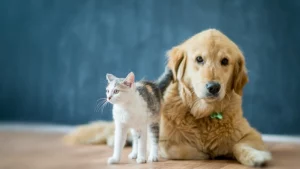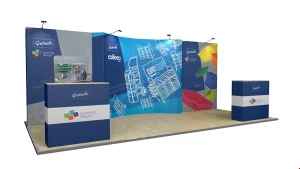Complications associated with pet feeding tubes can hinder recovery and prolong suffering. Implementing proactive monitoring and maintenance strategies is essential. Regular assessments of tube placement and strict cleaning protocols can mitigate the risk of infections and clogs. Tailoring nutritional plans to individual needs further supports healing. However, the role of education for pet owners is equally important. Understanding potential complications and recognizing warning signs can lead to timely veterinary intervention, ultimately influencing recovery outcomes.
Key Takeaways
- Implement regular tube cleaning and flushing to prevent obstruction and reduce infection risks.
- Monitor the pet’s nutritional intake closely, adjusting as needed for optimal health and recovery.
- Educate pet owners on recognizing complications early to facilitate prompt veterinary intervention.
- Establish a structured follow-up schedule to assess progress and adapt care plans accordingly.
- Utilize appropriate feeding techniques and food consistency to enhance tolerance and minimize gastrointestinal issues.
Recognizing and Assessing Pet Feeding Tube Complications
Effective management of pet feeding tube complications begins with recognition. Owners and veterinarians must identify common issues such as tube displacement, obstruction, irritation, and infection. Observing behavioral changes, appetite fluctuations, and gastrointestinal symptoms can reveal early warning signs. A thorough assessment of the pet’s condition—including physical examination and reviewing medical history—helps determine the severity of complications. Timely recognition allows for prompt intervention, reducing the risk of prolonged discomfort or serious health issues. Early detection not only supports faster recovery but also fosters trust between pet owners and veterinary professionals, ensuring attentive and proactive care.
Strategic Treatment and Maintenance Plans
Once pet feeding tube complications are identified, establishing structured treatment protocols is crucial. This includes maintaining tube hygiene through regular flushing and cleaning, adjusting feeding techniques, and monitoring for signs of infection or blockage. Nutritional plans should be customized to the pet’s individual health requirements, supporting optimal recovery and energy needs. In some cases, medical interventions—such as medication or temporary tube replacement—may be necessary. Clear, step-by-step strategies help owners confidently manage care at home while minimizing risks. Consistent maintenance and careful monitoring are essential to ensure the feeding tube functions safely and effectively throughout the recovery process.
Owner Education and Follow-Up Support
Educating pet owners is a vital component in managing pet feeding tube complications. Understanding potential risks, recognizing early signs of trouble, and knowing when to seek veterinary assistance empowers owners to act swiftly. Structured follow-up appointments with the veterinarian provide ongoing monitoring, enabling adjustments to care plans as the pet’s condition evolves. Owners who are well-informed are more likely to maintain proper tube hygiene, administer nutrition correctly, and detect subtle changes in their pet’s health. By fostering active collaboration between owners and veterinary teams, the recovery process becomes smoother, complications are minimized, and pets experience a safer, more comfortable healing journey.

Frequently Asked Questions
What Are Common Signs of Feeding Tube Complications in Pets?
Common signs of feeding tube complications in pets include vomiting, diarrhea, excessive drooling, lethargy, refusal to eat, signs of pain, and unusual behavior. Monitoring these symptoms is essential for timely intervention and improved outcomes.
How Can I Ensure My Pet Is Comfortable With the Feeding Tube?
To guarantee pet comfort with a feeding tube, maintain a calm environment, provide soft bedding, monitor for irritation, administer prescribed pain relief, and ascertain proper tube placement, which collectively reduce stress and promote healing.
Are There Specific Diets Recommended for Pets With Feeding Tubes?
Specific diets for pets with feeding tubes typically include easily digestible, high-calorie formulations. Veterinary nutritionists often recommend commercially available liquid diets or homemade options, ensuring appropriate nutrient balance tailored to each pet’s unique health requirements.
How Long Can a Pet Safely Have a Feeding Tube in Place?
A pet can safely have a feeding tube in place for several days to weeks, depending on individual health circumstances and veterinary guidance. Regular monitoring is essential to prevent complications associated with prolonged feeding tube use.
What Are the Costs Associated With Feeding Tube Placement and Care?
The costs associated with feeding tube placement and care typically range from several hundred to several thousand dollars, depending on factors like veterinary expertise, type of tube, and required post-operative monitoring and follow-up treatments.
Conclusion
To summarize, implementing smart solutions for pet feeding tube complications can greatly enhance recovery outcomes. Proactive monitoring, regular assessments, and proper cleaning techniques are essential in preventing infections and obstructions. Tailoring nutritional plans to individual needs and educating pet owners on recognizing complications promote timely veterinary intervention. By prioritizing hydration and fostering open communication with veterinarians, pet owners can effectively manage challenges associated with feeding tubes, ultimately ensuring a smoother and more efficient recovery process for their pets.
You May Also Like To Read:

